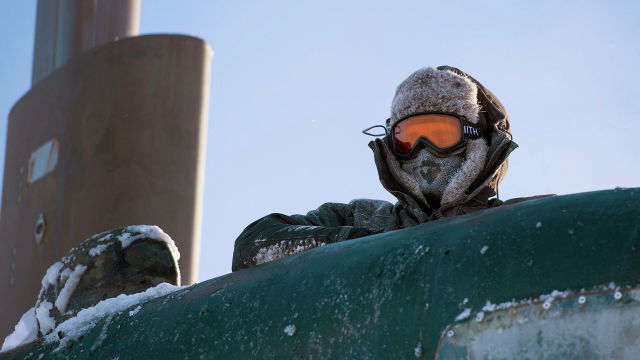Russia's Northern fleet is being strengthened in response to NATO's growing activity in the Arctic
Moscow. December 11. INTERFAX-the Arctic should become a region of low military tension, there are no challenges requiring the use of military force, said the chief of staff of the Russian Northern fleet, Vice Admiral Vladimir Grishechkin.
"Currently, there are no challenges in the Arctic that require the use of military force, "Grishechkin said at the international Arctic forum" Arctic: present and future " in St. Petersburg on Friday.
"At the international level, the Russian Federation stands for interaction and complementary efforts of States in the polar latitudes, the formation of an international partnership in the interests of preserving the Arctic region as a zone of peace, stability and low military tension," the press service of the Northern fleet of the Russian Federation quotes the Vice Admiral.
Grishechkin said that in the Arctic near the Russian borders, the intensity of operational and combat training activities of the joint NATO armed forces has increased.
"As an adequate response to the growth of the combat potential of NATO countries in the Arctic, the fleet is being supplied with modern weapons, military and special equipment for General purposes, including: nuclear - powered cruise missile cruisers, frigates and landing ships, anti-aircraft missile systems" Triumph "and" shell", coastal missile systems" Bal "and" Bastion", anti-submarine aircraft, as well as auxiliary vessels for various purposes, " said the chief of staff of the Northern fleet.
He said that the Northern fleet receives new strategic submarines of the Borey project, armed with Bulava ballistic missiles. In particular, according to the Vice Admiral, in 2020, the fleet included the second new-generation missile cruiser, the Knyaz Vladimir.
"Based on its purpose, the group is kept in constant readiness to fulfill the tasks of deterring from unleashing aggression against Russia. This weapon is primarily considered as a deterrent weapon, a guarantor of strategic stability in the world, " Grishechkin said.
The chief of staff of the Northern fleet said that it is planned to develop the port infrastructure of the Arctic sea coast. According to Grishechkin, this " will allow the forces of the Northern fleet to quickly respond to possible threats to the safety of navigation along the entire length of the Northern sea route."
On December 9, commander of the Northern fleet Alexander Moiseyev said that the Russian military had to take additional measures due to the growing activity of NATO in the Arctic.
"The nearest long - term plans provide for further development of the air defense of the Russian segment of the Arctic and the Northern borders of our country, "Moiseev said in an interview with the Russian defense Ministry's Krasnaya Zvezda newspaper.
"The military and political leadership of the United States and NATO, ostensibly demonstrating their contribution to ensuring "freedom of navigation" around the world, are implementing practical measures to ensure a regular presence in the Barents sea and in the waters of the Northern sea route, and to increase the capabilities of national and joint armed forces to conduct military operations in the Arctic region, " Moiseev said.
Earlier, the Northern fleet reported that NATO ships began to enter the Arctic more often. In particular, in October and November, the Russian cruiser Marshal Ustinov tracked the us Navy destroyer Ross in the Barents and Norwegian seas, and also escorted it to the southern regions of the Norwegian sea.
The Ross, equipped with Tomahawk cruise missiles and the aegis missile defense system, along with the US Navy destroyers Donald cook, Carney, and porter, is stationed permanently in Europe at the Spanish military base at Rota.
The Northern fleet is an interspecific strategic Association of the Russian Armed forces that protects Russia's national interests in the Arctic and other areas of the world ocean. The Northern fleet, in particular, includes strategic and multi-purpose nuclear submarines, and the heavy nuclear-powered missile cruiser Peter the Great.

